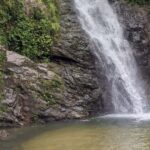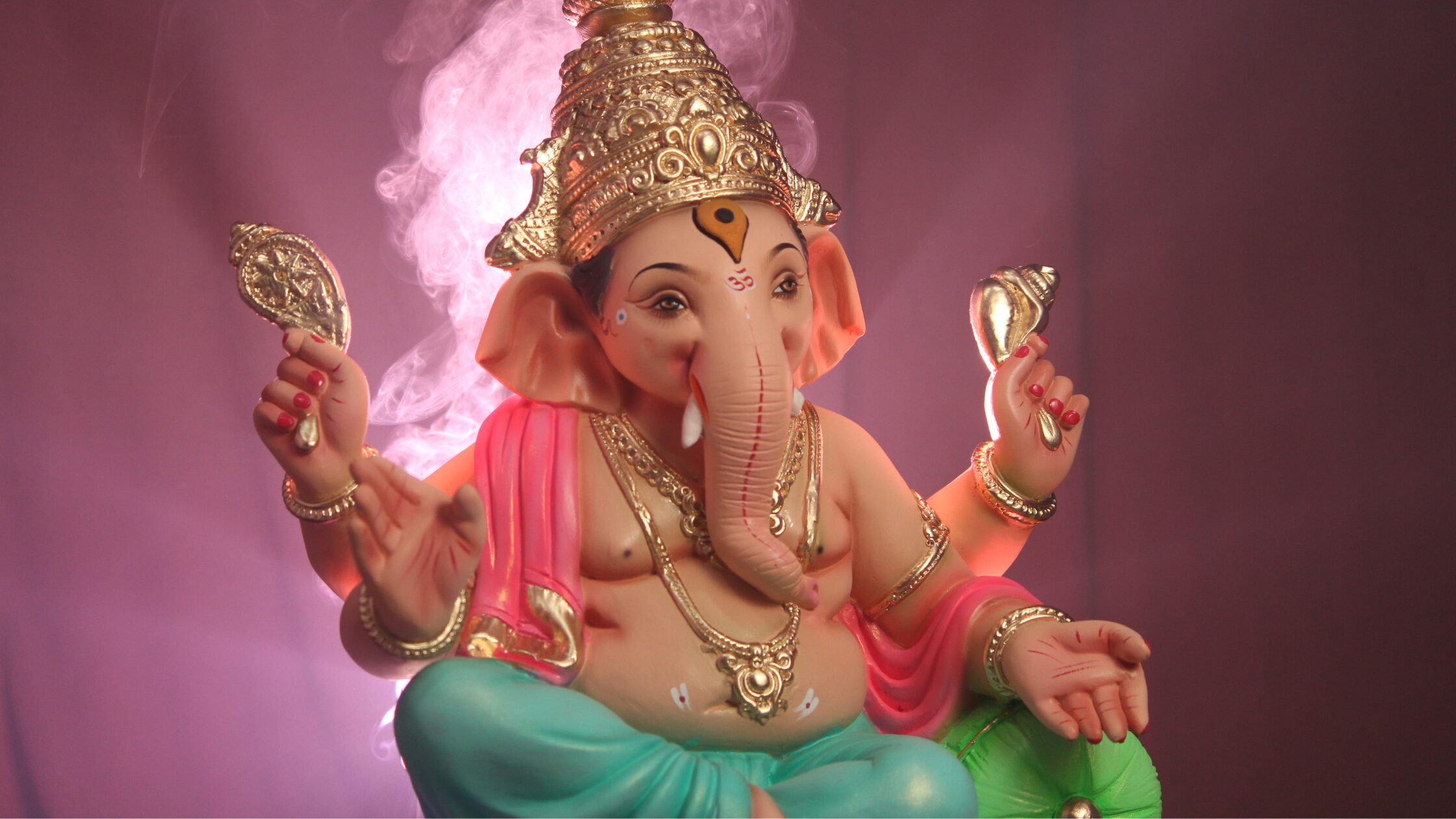The Garden of the Sleeping Giant is one of the few places in the world where you can walk amongst thousands of different orchids in a natural tropical setting. After taking the hour or so you will need to walk through it, expect to see colourful patches behind your eyelids for a while because the blooms are stunning. Just be aware that the paths are steep so carry drinking water with you and hope for a bit of rain to cool things down!
The Garden of the Sleeping Giant Location
The Garden of the Sleeping Giant is a 20 minute drive from Nadi, near Sabeto Mud Pools and 50cent Waterfall. This is the Google Maps location:
Overview of the Garden of the Sleeping Giant
Discover an oasis of tranquillity near Nadi at the Garden of the Sleeping Giant. You’re escorted into a landscape brimming with vibrant flora, enveloping you in Fiji’s natural splendour.
Opening Hours: Your visit can be scheduled from 9:00 AM to 5:00 PM. To fully experience the gardens, set aside approximately 4 to 5 hours.
History: Established in 1977 by the late actor Raymond Burr, the garden was initially a private collection that has flourished into public wonder.
Collection: Feast your eyes on an impressive assemblage of over 2000 different types of orchids. This lush collection is further enhanced by the indigenous plants, making it a treasure trove for botany enthusiasts.
Location: Nestled at the foothills of the Sleeping Giant mountain, the garden is a short drive north of Nadi, placing you within reach of a serene escape from the city’s bustle.
Admission Fee: An affordable entry charge applies, guaranteeing you access to both the gardens and the nearby Sabeto Mud Pools for a complete experience.
Facilities: Should you forget a towel for the mud pools, they’re available for rent at a nominal fee. The garden also features refreshments and souvenirs, allowing a tangible piece of this paradise to journey home with you.
Take the opportunity to wander through rows of Cattleya hybrids and marvel at the extensive variety of Asian orchids, creating a sensory experience unmatched within the South Pacific. This is your chance to immerse in a blend of horticultural artistry and natural Fijian beauty.
Historical Significance
When you visit the Garden of the Sleeping Giant, you’re not just stepping into a lush landscape; you are walking through a piece of history intimately connected with the legacy of a renowned actor.
Raymond Burr’s Legacy
The garden is inextricably linked to the late Raymond Burr, an actor best known for his roles in the television series Perry Mason and Ironside. Burr initially established the garden in 1977 as a personal and private collection of his favourite orchids. Over time, and with his tireless dedication, it flourished into one of the largest orchid collections in Fiji.
The dramatic landscape that surrounds the Garden of the Sleeping Giant was once a retreat for Burr, who found solace in the calm and beauty of the orchid sanctuary he created. It’s a testament to his love for horticulture, specifically orchids, reflecting his taste and style in the midst of Fiji’s natural splendour. Your experience of the garden’s tranquil paths and vibrant array of flora is a direct result of Burr’s vision and passion for plant life.
Exploring the Flora
Visiting the Garden of the Sleeping Giant in Fiji, you’ll witness an impressive collection of orchids and a commitment to the conservation of tropical gardens. This section guides you through the blossoming displays and the extraordinary array of both local and exotic species that calls this garden home.
Orchid Collections
The Garden showcases one of the largest orchid collections in Fiji, which once belonged to the late American actor Raymond Burr. As you stroll through, you’ll be captivated by the vibrant displays of cattleya hybrids, an array that boasts radiant colours and fascinating shapes. Each one is carefully tended to, ensuring a year-round spectacle.
Native Orchids and Exotic Species
Fiji’s native orchids sit alongside Asian orchids, offering a snapshot of the region’s biodiversity. Your eyes will surely be drawn to the exotic species that flourish here, accentuating the unique beauty and diversity of the Garden’s collection. Look out for the native Fiji orchids, some of which cannot be found anywhere else in the world.
Tropical Gardens Conservation
The conservation efforts within the Garden are notable. Here, tropical gardens are meticulously maintained, promoting growth and protection of both native flora and international species. The Garden’s dedication to preserving such a wide array of plants serves as a living library and a safe haven for botanical enthusiasts and researchers alike.
Visitor Experience
When you visit the Garden of the Sleeping Giant, you’ll find a blend of organised tours and the freedom to explore tropical wonders at your own pace. Here’s what you can expect to enhance your experience.
Guided Tours and Self-Guided Walks
Guided Tours: Dive into the rich history and stunning horticulture with guided tours that offer you expert insights into over 2000 varieties of orchids and other Fijian flora. A guide can enhance your visit with stories and facts you might not discover on your own.
Self-Guided Walks: Prefer solitude? Meander along serene boardwalks and garden paths. Signposts and information plaques dot the route, affording a self-guided experience through vibrant blooms and peaceful greenery.
Facilities and Services
The Garden realises that comfort enhances your experience. That’s why it includes:
- Amenities: Restrooms are available for your convenience.
- Refreshments: A cafe is on-site, offering drinks and light snacks to add leisure to your visit.
- Towel Rentals: If you’re visiting the nearby Sabeto Mud Pools, towels are available for hire.
Nature Walks and Jungle Trek
Nature Walks: Engage with the serenity of nature on a casual stroll. The garden paths guide you through a delightful collection of native plants in a carefully curated display.
Jungle Trek: For the more adventurous, the trek through the adjacent tropical rainforest might be what you love. It’s a chance to witness the raw beauty of Fijian jungle, complete with the lush canopy and exotic bird calls, for a truly immersive experience.
Amenities and Accessibility
Ensuring a smooth visit to the Garden of the Sleeping Giant starts with understanding the essentials regarding transportation and entry. You’ll find sufficient provisions for parking and payment facilities, allowing for a stress-free experience.
Transportation and Parking
For your convenience, several transportation options are available to reach the Garden of the Sleeping Giant. You can take public transport, which is a cost-effective solution, or opt for the swiftness of a taxi service. Should you prefer driving yourself, car hire services are readily accessible in the area. Upon arrival, parking is straightforward with designated areas available for your vehicle.
Entry Costs and Operating Hours
The cost of entry to the Garden is reasonably priced. It is advisable to carry cash, although payment facilities may also accept other forms of payment. Make sure to check the latest entry fees prior to your visit. The Garden’s operating hours are tailored to offer flexibility for morning or afternoon visits, with specific start times allowing you to plan your day accordingly.
Activities and Attractions
When you visit the Garden of the Sleeping Giant, you’ll be enchanted by the stunning displays of flora and natural beauty. Here, you can stroll through serene lily ponds, explore a lush rainforest, and take in panoramic views from lookout areas.
Lily Ponds and Rainforest
As you meander along the boardwalk, you’ll be greeted by the tranquil lily ponds that are a centrepiece of the garden. Take your time to observe the vibrant water lilies and lotuses that float on the water’s surface. Venturing further, the path will lead you into the heart of a dense rainforest, where the air is fresh with the scent of tropical foliage. Listen carefully and you’ll hear the melody of bird calls weaving through the canopy above.
The Lookout and Observation Points
For a rewarding experience, make your way to the lookout. Here, you’ll be afforded sweeping views of the surrounding rainforest. Observation points along the way offer a chance to rest and reflect on the natural splendour that envelops you. The tranquillity of the water juxtaposed with the verdant landscape provides a view that can only be described as breathtaking.
Preparing for Your Visit
Before embarking on your journey to the Garden of the Sleeping Giant in Fiji, it’s important to pack appropriately and understand the essentials for trail safety. Bringing the right items and being aware of the conditions ensures a pleasant visit.
What to Bring
- Protection from the sun: It’s crucial to bring sunscreen with high SPF to protect your skin from the intense Fijian sun. A wide-brimmed hat and sunglasses are also advisable.
- Insect repellent: Apply bug spray before starting your tour to ward off the local insects, particularly mosquitos, which can be abundant in tropical environments.
- Camera: Preserve the memories with your camera or smartphone. The lush vistas and striking orchids provide excellent opportunities for photos.
- Reusable water bottle: Stay hydrated in the heat; it is often warmer and more humid than you might be used to, especially when walking outdoors.
- Comfortable clothing and footwear: Wear breathable fabrics and closed-toe shoes suitable for walking on uneven paths.
Staying Safe on Trails
- Stay on marked paths: To protect the local flora and fauna, as well as for your own safety, always stay on the designated trails. The area is rich in wild plant life, and straying from the paths can damage sensitive ecosystems.
- Be mindful of weather conditions: Check the forecast before your visit, and if rain is expected, prepare for slippery conditions. It’s best to avoid the trails during severe weather.
Beyond the Garden
After indulging in the tranquillity of the Garden of the Sleeping Giant, laden with orchids and lush foliage, various attractions beckon. In the proximity of the Sabeto Mountains, the island of Viti Levu presents a tapestry of cultural and natural sites to enhance your Fijian journey.
Local Attractions
Adjacent to the serenity of the garden rests the Sabeto Mud Pools, offering a unique spa-like experience. Immerse yourself in the therapeutic mud, believed to possess healing properties, before rinsing off in the clear pools. A short journey will take you to Wailoaloa Beach, where a plethora of waterfront restaurants provide refreshing cocktails and local delicacies. For a unique souvenir, the craft market is a must-visit. Here, you can find handmade items embodying Fijian culture.
Cultural and Natural Sites
Venture deeper into the heart of Fiji to discover the Nausori Highlands. This rugged terrain provides breathtaking views and a stark contrast to the island’s coastal regions. Spiritual enrichment can be sought at the colourful Hindu temple, a testament to Fiji’s multicultural tapestry. Don’t miss the chance to explore more beaches along Viti Levu’s coastline, where the South Pacific’s crystalline waters are your playground. Tourists often access these sites via tourist buses, ensuring stress-free travel as you navigate the island’s treasures.
Remember, whether you’re mingling with locals at the craft market or lounging on a sandy shore, these experiences are extensions of Fiji’s beauty, just steps beyond the garden.
Accommodation and Dining
When planning your visit to the Garden of the Sleeping Giant, you’ll find an array of accommodation and dining options that cater to different budgets and preferences. Comfortable stays and delightful meals are easily accessible to enhance your experience.
Hotels and Resorts Nearby
You have a diverse selection of hotels and resorts nearby, ranging from luxury to budget-friendly options. For those looking for top-tier comfort, resorts offer amenities such as swimming pools, spas, and on-site dining.
- Luxury: InterContinental Fiji Golf Resort & Spa – opulent beachfront accommodation with an array of facilities.
- Mid-range: Novotel Nadi – a comfortable and convenient stay with good service.
- Budget: Hostels and guesthouses – affordable rooms, often with shared facilities.
Restaurant Options
When it comes to dining, you’re in for a treat with a variety of restaurant options. Whether you’re after traditional Fijian cuisine or international dishes, the area around the Garden caters to all appetites.
- High-end: A selection of hotels offer fine dining restaurants with fresh, local ingredients.
- Casual dining: Explore bistros and cafes that serve up hearty meals.
- Quick bites: Local eateries and tourist buses provide affordable options for a meal on the go.
Look for restaurants that take advantage of Fiji’s abundant seafood and be sure to try some local dishes like kokoda during your stay.
Visitor Tips
Visiting the Garden of the Sleeping Giant in Fiji offers a chance to witness a breathtaking botanical display. To maximise your experience, consider the following tips tailored for your journey.
Best Times to Visit
Morning Hours: Plan your visit during the early hours, ideally right after opening at 9:00 AM, to enjoy the golden light that bathes the gardens in a warm, soft glow, perfect for photography. This time also tends to be quieter, allowing for a more serene stroll through the gardens.
Avoiding Crowds: If you prefer a less crowded experience, weekdays are usually less busy compared to weekends. Check the weather forecast as well, since the garden’s natural beauty shines brightest on clear days.
Photography and Souvenirs
Photography: The Garden of the Sleeping Giant is a photographer’s dream with its rich variety of orchids and lush landscape. Capture your memories in the vivid colours at midday, when the light is bright, or during those golden morning hours for softer tones.
Souvenirs: For mementos of your visit, there are unique souvenirs available for purchase. Consider picking up a postcard or a botanical print to remember the splendid flora you’ve encountered. Ensure you respect the no touching policy with the plants to preserve their beauty for others.
Remember to charge your camera and clear your memory card before visiting, as you won’t want to miss any photo opportunities in this spectacular place.
Frequently Asked Questions
When planning your visit to the Garden of the Sleeping Giant, you likely have some questions. Below you will find detailed answers to some of the most common enquiries to help you prepare for your trip.
What is the history behind the Garden of the Sleeping Giant?
The Garden of the Sleeping Giant was originally established in 1977 by the famous actor Raymond Burr. It houses a vast collection of more than 2,000 different orchids and was initially part of his personal horticultural retreat. Since then, it has grown to become a major attraction, celebrated for its lush landscapes and impressive plant collection.
Where exactly is the Garden of the Sleeping Giant located?
The Garden is nestled at the foothills of the Nausori Highlands, about half an hour’s drive north of Nadi. It is situated on Wailoko Road and provides a serene escape from the bustling town centre.
What have visitors said about their experience at the Garden of the Sleeping Giant?
Visitors often express admiration for the tranquil atmosphere and the stunning variety of orchids. Most reviews highlight the well-maintained paths and the relaxing stroll through beautifully landscaped grounds, and the remarkable beauty the garden holds is a common point of appreciation among tourists.
What are the different transport options for reaching the Garden of the Sleeping Giant?
You can reach the garden by a variety of transport options, including local buses, taxis, or rental cars. Some tourists opt for organised tours that include transportation to and from the garden.
What is the entry fee for the Garden of the Sleeping Giant?
A nominal fee is required for entry to the Garden, which helps with the maintenance and upkeep of this lush space. Fees can vary, so it’s wise to confirm the current price before your visit.
How long should one allocate for a visit to the Garden of the Sleeping Giant?
It’s recommended that you allow at least an hour or two for your visit to fully enjoy the serenity and beauty of the garden. This should give you ample time to walk the paths, admire the plant life, and relax in the garden’s calm setting.





